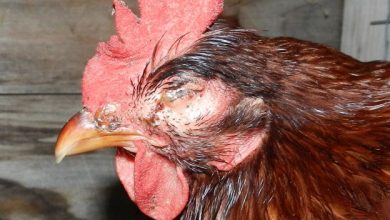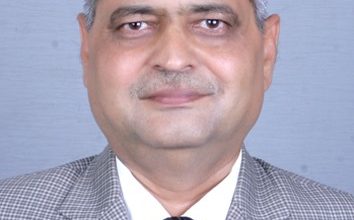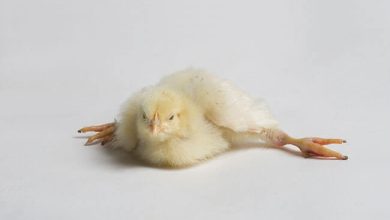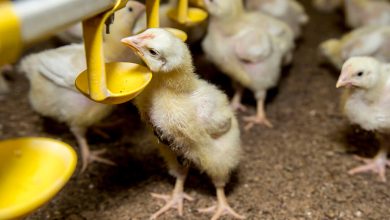AN OVERVIEW ON POULTRY SEMEN
A.Yadav1, D. K. Chaurasia1, S. S. Biswal1, S. Sathapathy2* and S. K. Joshi3
1Department of VGO, CVSc. & A.H., OUAT, Bhubaneswar – 751003, Odisha, India
2Department of Anatomy & Histology, CVSc. & A.H., OUAT, Bhubaneswar – 751003, Odisha, India
3Scientist (Animal Science), KVK, Jharsuguda, OUAT, Bhubaneswar – 751003, Odisha, India
Introduction
Chicken is the most common and widespread domestic animals, with the total population of more than 19 billion as of 2011. Considerable information is available on the semen quality of chicken and turkey and frequently used wherever the technique of A.I. is employed. More than one third of all psittacine species are listed as threatened by the International Union for Conservation of Nature and Natural Resources. The main risk and cause of this decline is, apart from illegal trade and slight clutch size in some species, the steadily progressing loss of habitat. Assisted reproduction includes semen collection and artificial insemination (AI) which have been practiced effectively in domestic fowl for almost 80 years Assisted Reproduction Technologies (ART’s), such as Artificial Insemination (AI) contribute to increase poultry production, as it allows a wider use of genetically superior cockerels with a high productive performance.
Poultry semen collection techniques:
In 1937 Burrows and Quinn described a non-invasive method, the abdominal massage method for collection of semen from roosters. The technique involves restraining the male and gently stroking the back of the bird from behind the wings towards the tail with firm rapid strokes. The male responds with tumescence erection of the phallus, at which time the handler gently squeezes the cloaca extracting semen through the external papillae of the duct us deferens (vas deferens) collecting the semen into a container.
As stated by Burrows and Quinn (1937), the techniques of AI actually begin prior to the procedure. It includes housing the male poultry away from the hens maximizes the amount of available semen. Because the bird’s phallus is located in the same duct as his anus, removing food 12 hours prior to collection will help prevent fecal contamination of the semen. Roosters and tom turkeys need to be routinely primed for semen collection for several days prior to the actual AI procedure to guarantee that each bird is fertile with a microscopic examination of the sperm. According to Burrows and Quinn (1937), as with semen collection of other farm animals, one must stimulate the bird’s sexual organ to extend outside of his body. One person can handle this procedure with small birds such as chickens or quail; it normally takes two people with a large turkey or a goose.
Characteristics and chemical components of chicken semen :
In the male, semen is composed of sperm and seminal plasma secreted by the epididymis and vas deferens. The sperm are produced in the testes, and in the case of the avian species the seminal fluid is also produced in the testes. All these secretions in the testes are controlled by the endocrine hormones carried to them in the blood stream. The pituitary FSH and LH regulates the testes, which in turn produce testosterone, which controls the testicular development and secretions (Hafez, 1974).
Table1. Characteristics and the mean chemical components of semen in cock
| Characteristics and Components | |
| Ejaculate volume (ml) | 0.2-0.5 |
| Sperm concentration (×106/ml) | 4000-6000 |
| Sperm/ejaculate (×109) | 0.06-3.5 |
| Motile sperm (%) | 60-80 |
| Morphologically normal sperm (%) | 85-90 |
| Protein (g/100 ml) | 2.8 |
| pH | 7.2-7.6 |
| Fructose (mg/100ml) | 4 |
| Sorbitol (mg/100ml) | 0-10 |
| Inositol (mg/100ml) | 16-20 |
| Glycerylphosphoryl choline (GPC) (mg/100ml) | 0-40 |
| Ergothioneine (mg/100ml) | 0-2 |
| Sodium (mg/100ml) | 352 |
| Potassium (mg/100ml) | 61 |
| Calcium (mg/100ml) | 10 |
| Magnesium (mg/100ml) | 14 |
| Chloride (mg/100ml) | 147 |
Gross evaluation of semen :
Determination of the viability of spermatozoa after semen storage is important for several reasons. First, it provides an estimate of semen quality. If inseminated with poor quality semen, it reduces fertility, increases embryo mortality and forces the hen to rely on spermatozoa from previous inseminations. More traditional semen evaluation procedures include determination of semen volume, color, concentration, motility, viability and morphology of spermatozoa. Many of these assessments correlate with the fertilizing capacity of spermatozoa when fresh semen is evaluated. Histological and fluorescent stains have been used to determine live/dead sperm ratios and metabolic activity.
Semen color :
The color of semen is generally an indicator of the density of the ejaculate. The semen of the domestic fowl varies from a dense opaque suspension to a watery fluid secreted by various reproductive glands. It ranges from a relative high sperm density or degrees of clear to milky white, with declining sperm numbers. The color of semen may depend on the species of bird used, but generally semen should be creamy which indicates a high sperm concentration. Color could also serves as an indicator of contamination by e.g. feces or urine and thus become brown or green in color. Sometimes flakes of blood may be present, which may be a result of excessive force during the collection process or injury. Semen samples that are contaminated by feces do not have to be discarded, but diluted with antibiotics e.g. penicillin and dihydrostreptomycin or neomycin to reduce the loss of sperm. Antibiotics can also increase fertility when used as a diluent in semen.
Ejaculate volume :
The cockerel produces between 0.01 ml – 1 ml per ejaculation, with 0.6 ml being the average ejaculate volume recorded (Cole and Cupps, 1977). Different cockerels of the same species often produce different volumes of semen at different times. The average volume ejaculated using the abdominal massage technique is approximately 0.25ml. Bah et al. (2001) found the mean semen volume to be 0.28 ± 0.14ml. However, the recorded semen volume was found to range between 0.37 ± 0.02 and 0.73 ± 0.01 ml. It is important to realize that semen volume and sperm concentration (volume multiplied by the concentration) will determine the total number of sperm collected per ejaculation. This could facilitate the determination of the number of insemination doses that can be prepared.
Table 2. Comparative structure of the Galliform Epididymis based upon volumetric proportions (%) of component structures by species:
| Structure | Chicken |
| Rate testis | 13 |
| Proximal efferent ducts | 27 |
| Distal efferent ducts | 7.7 |
| Connecting ducts | 2.3 |
| Epididymal ducts | 7.6 |
| Connective tissuse | 38 |
| Blood vessels | 2.5 |
Semen pH:
The semen pH varies slightly between different breeds and bird species. The optimum semen pH ranges between 7.0 and 7.4. Sperm motility is generally high between a pH of 7.0 and 7.4 (slightly alkaline) and also increases the fertilizing ability, compared to a pH of 6.4 (acidic), which is not suitable for semen preservation, as it may cause damage to the plasma membrane of the sperm cell. This variation in semen pH may be due to many factors. The pH, especially that of ejaculated semen is dependent on several secretions involved. Poor quality semen generally contains large amounts of fluid from the accessory glands, which increases the semen pH. The pH of semen is likely to decrease as the time between collection and measurement increases, and the semen collection tubes are narrow in shape causing sperm to break down fructose in the semen to lactic acid under anaerobic conditions. Semen samples that contain many dead sperm may evolve to ammonia, which will also increase the pH.
Sperm morphology:
Normally the sperm cell consists of a head, mid piece and tail portion. The head contains the nucleus, containing the genetic material, which is the sire’s genetic contribution to the offspring. The post-nuclear cap which covers the posterior part of the nucleus and acrosome which covers the anterior part of the nucleus both protect the nucleus. If the acrosome is malformed or damaged the sperm cell will not be able to fertilize the ova by penetrating the Zona pellucida. Acrosome, sperm head, middle piece and tail deformations in fresh white leghorn cockerel ejaculates have been recorded to be 0.62 ± 0.04%, 1.34 ± 0.05%, 2.47 ± 0.05% and 2.89 ± 0.08% respectively. While Tuncer et al., (2008) also recorded values of acrosome, sperm head, middle piece and tail deformations 0.39 ± 0.03%, 1.06 ± 0.03%, 2.32 ± 0.05% and 2.53 ± 0.04% respectively in cockerels.
Semen concentration:
Poultry semen is highly concentrated, containing an average sperm concentration of 4-6 billion spermatozoa /ml in cock and has a low volume.
Factors affecting semen quality:
The assessment of semen quality characteristics of poultry birds gives an excellent indicator of their reproductive potential and has been reported to be a major determinant of fertility and subsequent hatchability of eggs. The breed and time of semen collection affects cock semen. In addition, age by genotype interaction effect was important only for semen volume.
Only morphologically normal spermatozoa are capable of ascending through the vagina of the hen to the region where the sperm storage tubules are located (Bakst et al., 1994). Sperm motility is a primary determinant of fertility in domestic fowl. Sperm mobility is a function of the product of motile concentration and theproportion of motile sperm with a straight line velocity >30 m/s. The hormone level in seminal plasma is a direct reflection of male testicular endocrine activity. High quality semen determined by the condition of normal spermatogenesis. Estrogen, in addition to testosterone plays a role in the development and function of the testis and male reproductive tract.
Semen osmotic pressure in poultry:
An increase in the osmotic pressure can be ascribed to the contamination of broiler semen with urine and bacteria, which in turn results in the clumping of sperm. A 375mOsm/kg osmotic pressure is optimum for the short term storage of semen. However the recommended osmolarity of the Blom stain technique is lower and was quantified as 220 mOsmol/kg dissolved in diluents, with composition similar to that of seminal plasma. However these hypo osmotic conditions resulted in the swelling of the sperm head. The semen diluents must be isotonic, as the osmotic pressure created by the solution may be detrimental to the sperm cell.
Short term poultry semen preservation:
Semen diluents are currently being used for both short and longterm storage of domestic fowl semen. These extenders are being commercialized to improve the general reproductive effectiveness of the cockerels and lower the cost of AI. The development of semen diluents initially began with the use of NaCl (saline) solutions. Now complex diluents containing different osmotic regulators, energy sources and buffers are being used. The most common practice for short term fowl semen storage (hours to days at a temperature of -4°C) requires the suspension of sperm in a suitable extender to maintain the sperm viability, in vitro. Assessment of diluted and undiluted stored cockerel semen revealed that the application of extenders is essential to sustain sperm quality. It was established that diluted fowl semen could be stored for up to 24 hours, without impairing the viability and fertilizing capacity of the sperm. Several other factors play a role in sustaining the quality of semen during storage over time e.g. the diluents used in semen extension and storage conditions e.g. time, aeration and storage temperatures. It is known that sperm motility and the fertilizing capacity of undiluted raw fowl semen stored in vitro usually decreases within 1h after collection. Therefore, to store cockerel semen, the type of diluents and storage temperature is very crucial.
Generally, an extender will facilitate semen handling procedures, particularly during collection and evaluation, by maintaining the sperm viability, but preventing their activation. For semen maintained at 41°C and diluted BPSE or Minimum Essential Medium (MEM) there were quadratic and linear increases in the percentage dead sperm over time, while a drastic linear increase existed for undiluted semen. There was thus a linear decrease in Sperm Quality Index (SQI) for undiluted and semen diluted in MEM over time (4°C). However, for semen diluted with only BPSE, there was a linear increase in SQI. Extenders serve to also protect the sperm cells from chemical and physical changes and contamination in their environment and provide more favorable conditions for fertilization.




